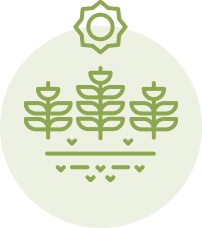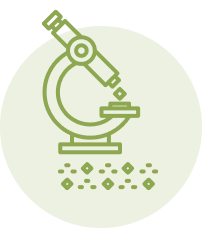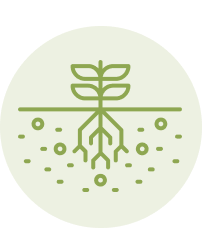Container gardening is the art of growing plants, from flowers and vegetables, to trees and shrubs, in a container. Almost every plant that can be grown outside in your yard can also be grown in a container on your patio, making container gardening a versatile option for gardeners alike, especially those with small spaces to contend with. Container gardening is also easy, offering fast soil prep, and less maintenance.
In addition to their convenience, container gardens also offer gardeners the unique opportunity to easily control the soil environment. This is not only great for plants with stringent soil requirements, but also allows for gardeners to experiment with creating different microclimates and cultivating unique plant varieties.
In order to start a container garden that gives you all of these benefits, there are a few basic things you should know. If you follow these steps, you’ll be able to grow a container garden that’s healthy and easy to care for.
- Find the correct plant variety. You can grow nearly any plant in a container, but there are specific varieties that have been bred to grow well in smaller spaces. If you’re interested in lemon trees, for instance, choose a miniature version that is designed not to spread out much. Some plants will do better in containers than others, so it’s important to do a little research before you buy your plants and seeds.
- Choose the right container. The type of plant you want to grow will also influence the container you use, since the container should fit your plant. Larger plants like miniature lemon trees will need a larger container to allow for more root growth. Smaller flowers or herbs can be planted in smaller containers. In general, bigger pots are considered best, because they allow for better soil temperature regulation and space for the plants to grow. If you’d like to make things even more unique, you can also choose decorative bottles, boxes, bowls, or kettles to grow plants in. This adds a little extra flair to container gardens. Just be sure that the containers have adequate drainage, so you don’t overwater your plants.
- Choose the right growing medium. A high-quality soilless media is incredibly important for success with container gardening, as it provides the foundation for success. Garden soil is not a good choice for containers, as it usually becomes compacted when put in containers. In addition, it may contain weed seeds and disease organisms. A good soilless potting mix will be free from disease organisms and weed seeds and have the pH adjusted to the proper range. Most soilless mixes are made of a blend of peat moss and perlite. Compost, worm castings, and vermiculite are other common additives. Soilless mixes are designed to drain well but still retain water available to plants.
- Fertilize. Plants in container gardens need fertilizer through the growing season, and there are multiple options to choose from, including water soluble synthetic fertilizers, organic fertilizers, and compost. Earth Science fertilizers suitable for container gardens include Moorganite™, Blood Meal, and Bone Meal. These products are suitable for all types of plants.
- Find an ideal location. One of the advantages of containers is that you can place them anywhere, so you can choose a location that’s ideal for your plants. If you find that your plant isn’t doing as well as it could be, try moving it to an area with more or less sun.
- Make sure you water your plants regularly. Each type of plant needs a different amount of water, but whatever plants you’re growing, make sure you water them regularly. It can be once a day, once a week, or once a month, whatever is needed. Usually, you will want to keep the soil moist but not wet, and water your plants until excess water pours out of the bottom of the container.
You can grow just about any plant in a container using the steps above. Some of the most popular plants to grow in containers include herbs, such as thyme, rosemary, and mint. Hanging baskets filled with flowers are also very popular, as are miniature fruit trees.
With a properly prepared container garden that follows these basic steps, you’ll have a garden that you can move around your yard as necessary. And, depending on where you place your pots, your plants will create focal points and discussion starters, as well as brighten up spaces.
For more information on container gardens, contact us today!



